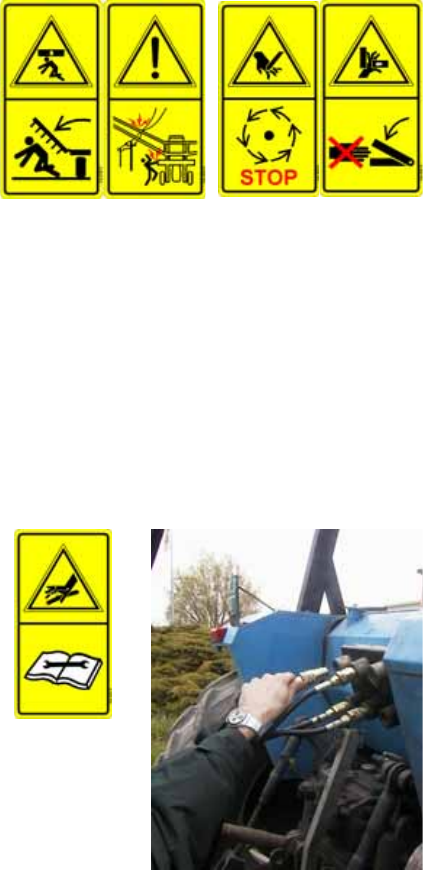
unigreen 19
5.4 HYDRAULICS
The RV, VL, VLX, FXF and FXL model distributor accessories have hydraulics
that can be controlled by the operator directly from the seat in the cab.
Check that no one and nothing is in the area where the booms will open;
particular attention should be paid to the presence of any electric power lines.
The hydraulic plant can be fed from the hydraulic pump of the tractor.
The hydraulics can be controlled using the lever of the tractor (RV and VL) or
a hydraulic distributor with mechanical or electro-hydraulic command with
switches in the cabin (VLX, FXF and FXL).
- All of the controls on both versions are sustained action controls and each
lever or switch has a pictogram of the relevant operation it controls.
WARNING: with hydraulic booms, don’t stand in the range of action of the
machine.
Pay attention to the integrity and efficiency of the hydraulic components and
in particular to the pipes to prevent the risk of bursting.
Do a full check on the pipes and components at least once a year, we
recommend replacing hydraulic pipes every 3-4 years.
5.4.1 OIL FEED FROM TRACTOR
(for hydraulic systems)
Connect the delivery and discharge quick-fit coupling to the respective
connections, respecting the direction of flow.
The distributor inlet pipe is connected to the aluminium flow separator valve
next to the distributor.
The flow separator must be adjusted correctly so it sends less than 4-5 L/1°
to the distributor.
To prevent the cylinders moving at a dangerous speed, adjust the relevant
chokes near the cylinders. If the registration ringnuts aren’t visible then fixed
chokes are fitted. The chokes are fitted on the discharge line of the movement
to slow.
Any impurities in the oil could block the chokes and as a consequence block
the cylinder; remove the dirt if necessary. The maximum pressure valves of
the distributors are regulated to a pressure of around 150 bar.
To prevent the excessive heating of the oil we recommend supplying the
distributor of the sprayer only when the cylinders are being used.
We recommend having qualified personnel do any adjustments.
Pay attention to the integrity and efficiency of the hydraulic components and
in particular to the pipes to prevent the risk of bursting.
Do a full check on the pipes and components at least once a year, we
recommend replacing hydraulic pipes every 3-4 years.


















